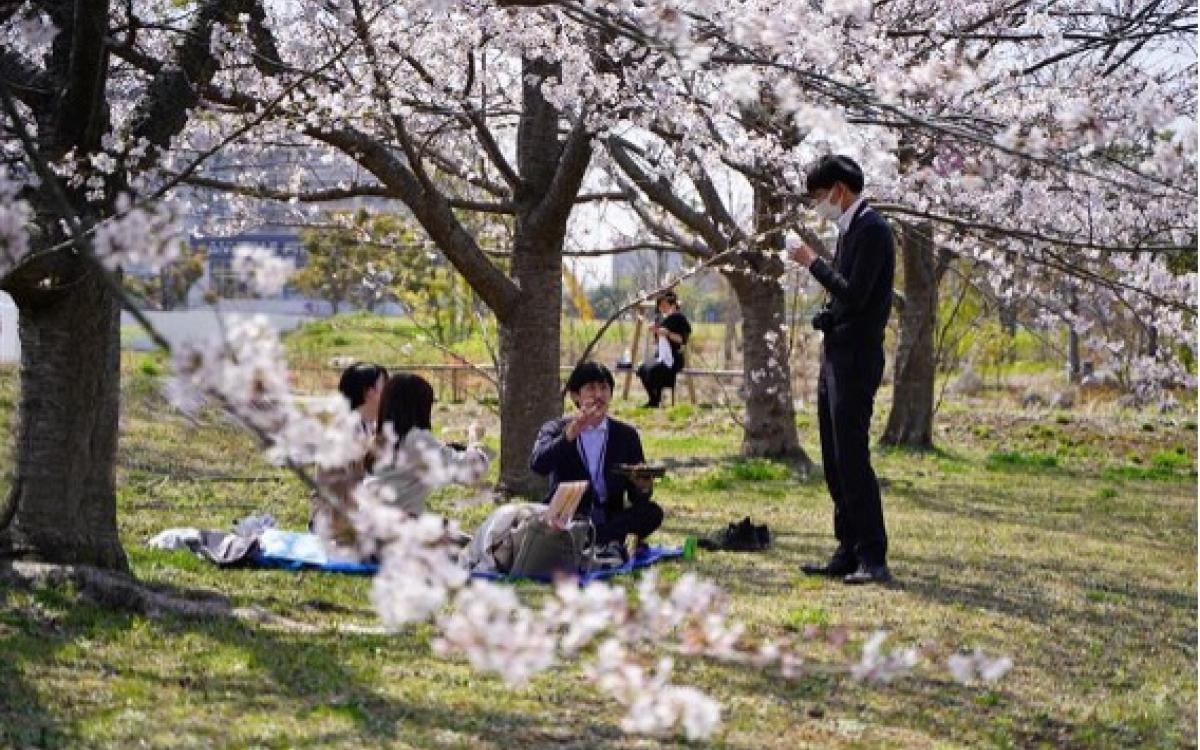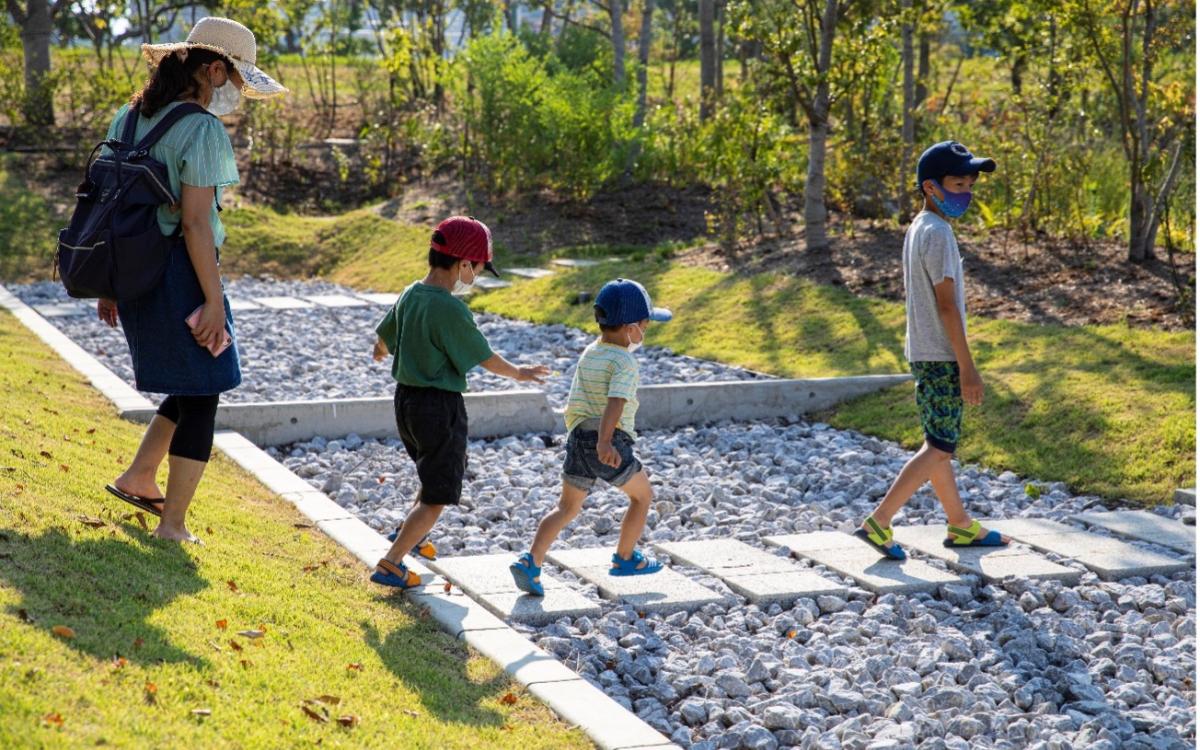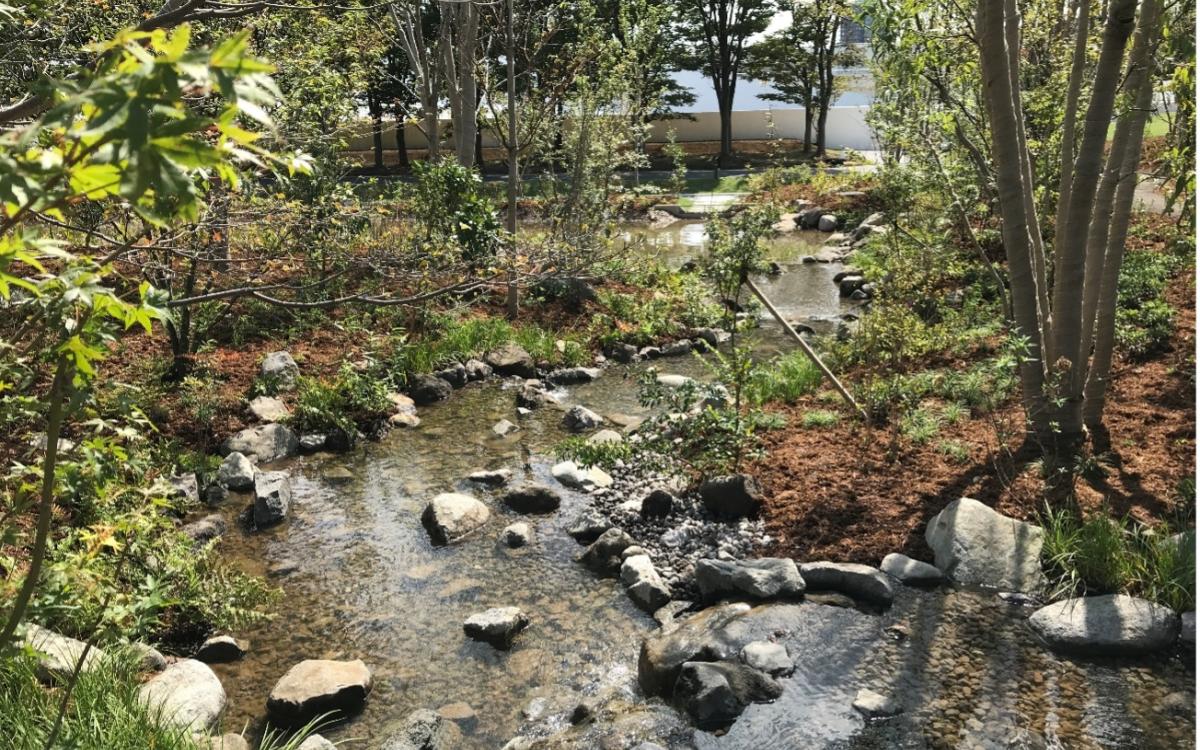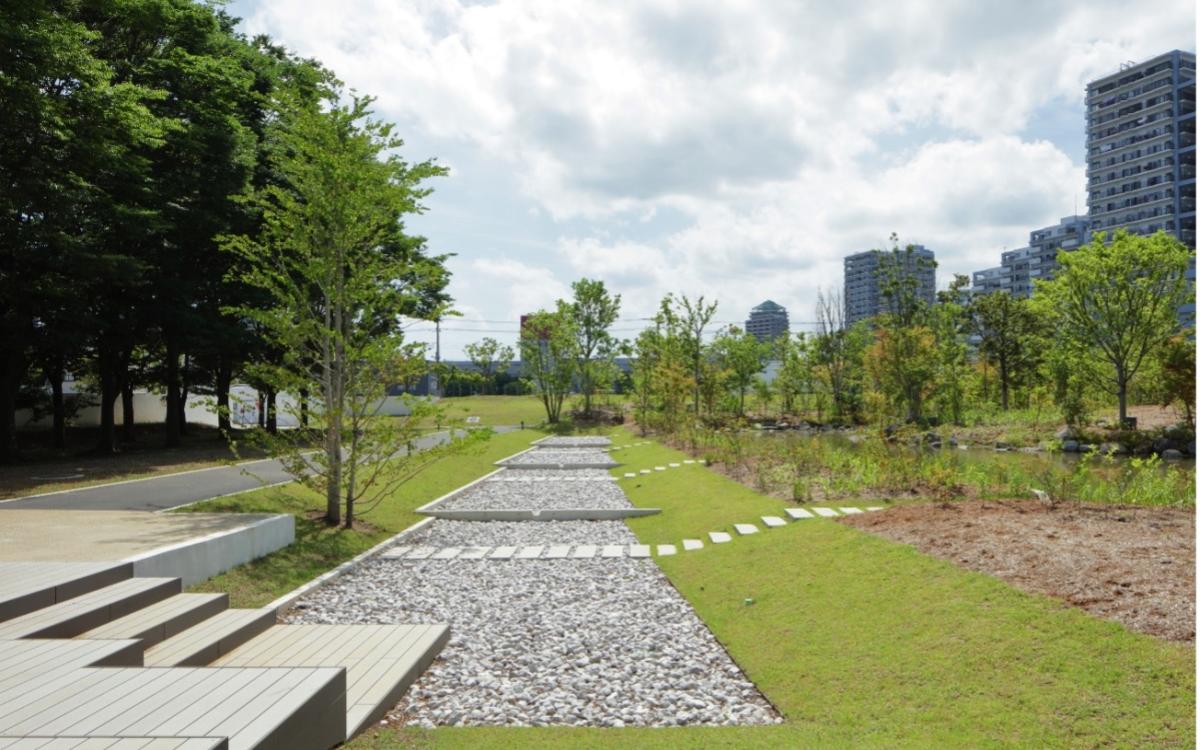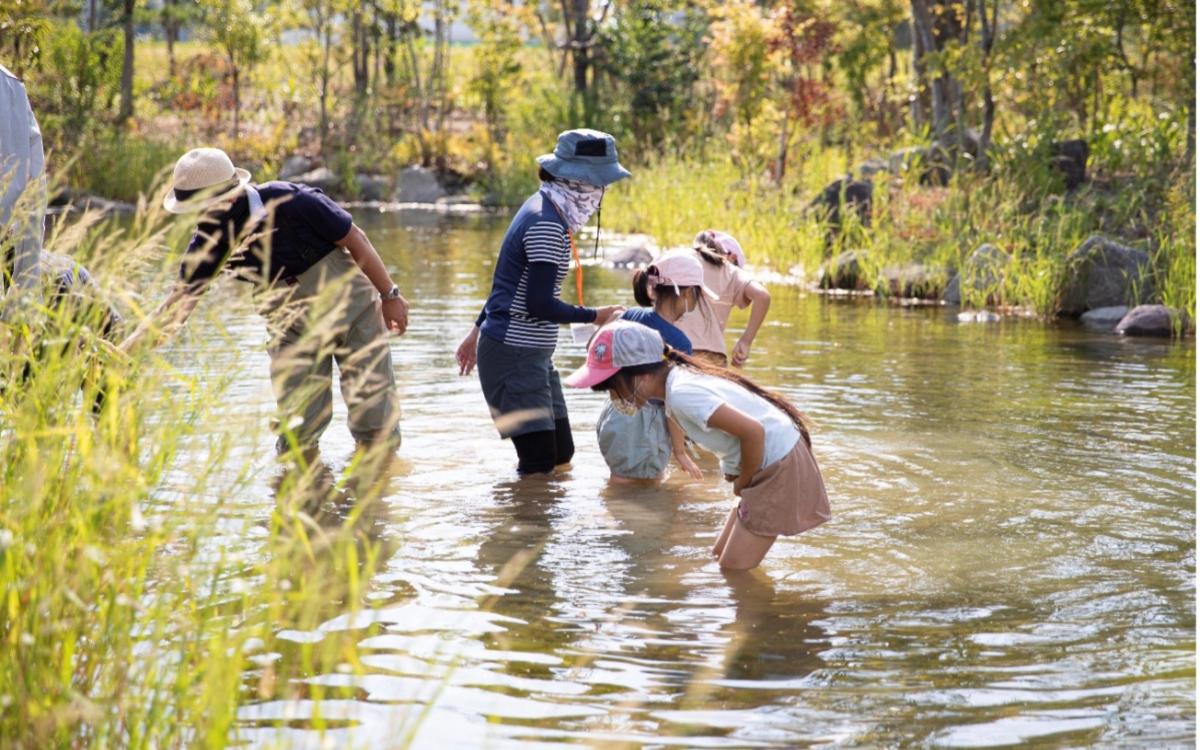Inzai, Chiba
Japan
As a construction company designing and constructing exterior green spaces, receiving SITES Gold certification allows us to show our commitment to sustainability and to communicate solutions based on SITES evaluation items to customers who are highly motivated to solve similar local issues.
The project site is located in the rural outskirts of Chiba-prefecture, Japan, within the corporate boundary of Takenaka Corporation’s research and development institute, a 400-year-old construction and engineering firm. The grounds of the site were originally an abandoned space with invasive grass species growing and highly compressed from past development. With solar panels occupying the space, it had limited land use and provided virtually no opportunity to enjoy the outdoor environment for both the occupants of the institute and local wildlife.
26 years have passed since the Research and Development Institute of Takenaka was built in Inzai city, in 1993. Through those year, the social challenges that circled us have changed dramatically and thus the company decided to renew the outdoor yard situated in the corner of the property into a research field for green infrastructure and other programs to develop urban biodiversity.
The project began with a careful study of the surrounding ancestral “Satoyama” landscape. “Satoyama” is a traditional Japanese rural landscape, often symbolized as a landscape with rice paddies and small village community. Satoyama is formed by well-balanced human cultivation and natural processes that mutually benefit each other. The Satoyama landscape includes waterbodies, grassland, well-maintained forests, and farm area which accommodate biodiversity hotspots acting as a model of sustainable ecosystem management, which had been sustaining the living of Japanese village communities for thousands of years. To incorporate the socio-ecological system of Satoyama into the project, the site introduced a small suburban forest area with local trees, pond, grassland, and farming area, after considerable soil restoration, in order to contribute to regenerating the biodiversity and ecosystem services that existed in the neighborhood.
What was a blank field with solar panels dominating the surface, was renovated into a green field with many different usage and characteristics, such as rain water run off control structure called Rainscape®, which merge into a forest area that mimicked the surrounding natural forests creating habitat for birds and insects, conducting ex-situ conservation of endangered native water plants in the pond, practicing organic farming, and urban beekeeping. In this new green field, Takenaka researchers collaborate with outside professionals and local experts to develop solutions that create an environment where people and nature can coexist, striving to create nature-positive innovations.

